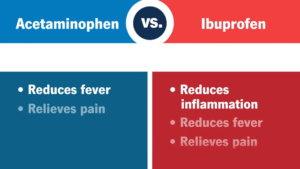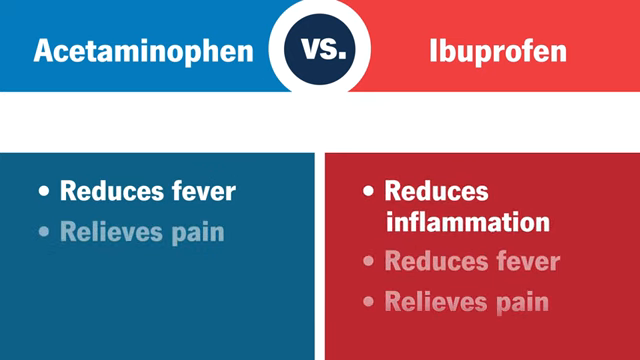Acetaminophen, a widely used over-the-counter medication, is typically regarded as a pain reliever and fever reducer. It is a staple in many households, often associated with mild to moderate pain relief, from headaches to muscle aches, and even the symptoms of cold and flu. But what if there’s more to acetaminophen than just reducing pain? In recent years, researchers have uncovered some surprising interactions between acetaminophen and antibiotics, raising important questions about how these drugs might work together in managing infections and promoting recovery.
While acetaminophen itself is not an antibiotic, its role in managing symptoms like fever may create indirect benefits when used alongside antibiotics. By reducing fever and inflammation, acetaminophen can potentially improve the body’s ability to heal during an infection. However, there are significant differences between the two types of drugs that are worth understanding.
The Difference Between Acetaminophen and Antibiotics
Acetaminophen is classified as an analgesic and antipyretic, meaning it alleviates pain and lowers fever, but it does not address the root cause of an infection. Antibiotics, on the other hand, are designed to target bacterial infections, either by killing bacteria or inhibiting their growth. They are effective against specific strains of bacteria but have no impact on viruses, which is why they are not effective in treating conditions like the common cold or flu.
Despite the clear distinction, scientists have explored whether there could be any synergistic effect between acetaminophen and antibiotics. For example, studies on the impact of common pain relievers like acetaminophen on antibiotic resistance have become an area of increasing interest.
The Emerging Link: Acetaminophen and Antibiotic Resistance
Recent studies suggest that acetaminophen and other non-steroidal anti-inflammatory drugs (NSAIDs), such as ibuprofen, might inadvertently contribute to the development of antibiotic resistance. While acetaminophen doesn’t directly affect bacteria, its use in combination with antibiotics could influence the growth and survival of certain bacteria, particularly in terms of how they interact with the body’s immune system.

Researchers have found that acetaminophen could change the environment within the human body in ways that support bacterial survival. In one notable study, acetaminophen was observed to have an indirect effect on bacterial resistance, particularly when taken alongside antibiotics like amoxicillin. These findings have sparked a larger conversation about the unintended consequences of combining these common medications.
The Science Behind the Interaction
The interplay between acetaminophen and antibiotics may lie in how acetaminophen modulates the body’s inflammatory responses. By lowering fever and reducing inflammation, acetaminophen may alter the immune system’s natural ability to fight infection. This could have a direct impact on how effectively an antibiotic performs, particularly in severe or chronic infections.
Interestingly, some studies have suggested that pain relievers, like acetaminophen, might make bacterial strains more adaptable to the pressures of antibiotic treatment. This emerging research is a reminder of how the body’s response to medication is complex and interconnected.
Can Acetaminophen Improve Antibiotic Efficacy?
The question remains: can acetaminophen improve the effectiveness of antibiotics? The answer isn’t straightforward. Some experts argue that acetaminophen’s fever-reducing properties might help patients feel better during antibiotic treatment, but it doesn’t necessarily enhance the antibiotic’s ability to target bacteria. Instead, it may simply make the experience of illness more manageable for the patient.
More research is needed to fully understand the potential benefits and risks of combining acetaminophen with antibiotics. In particular, studies focusing on the effects of long-term use and the potential for increased antibiotic resistance will be critical in shaping future guidelines for these medications.
What This Means for Patients
For now, patients should be mindful of how they use acetaminophen, especially when undergoing antibiotic treatment. It’s essential to follow prescribed dosages carefully and avoid overusing any pain-relieving medication. While acetaminophen remains a valuable tool in managing pain and fever, it’s not a cure-all, and its interaction with antibiotics should not be underestimated.
In some cases, healthcare providers may recommend alternatives or additional treatments to address pain and inflammation while managing infections. It’s important for patients to work closely with their doctors to ensure they’re receiving the most effective treatment plan tailored to their specific needs.
A Forward-Looking Approach: Exploring Synergies and Risks
As science continues to evolve, so too must our understanding of how common medications like acetaminophen and antibiotics interact. Looking ahead, we might see new innovations that combine these drugs in ways that maximize their benefits while minimizing risks, such as antibiotic resistance. Until then, it’s crucial for healthcare professionals to guide patients in making informed choices about pain management, particularly when battling infections.
The development of antibiotics and pain relievers has been one of the most important advancements in medicine. Understanding how these medications work together will only improve the outcomes for patients, ensuring that we continue to make strides in both treating infections and managing pain effectively.
[Table for WordPress Insertion: Acetaminophen and Antibiotic Information]
| Medication | Class | Primary Use | Effect on Antibiotics | Key Considerations |
|---|---|---|---|---|
| Acetaminophen | Analgesic & Antipyretic | Pain relief and fever reduction | May alter immune response to infections | Can reduce fever, making patients feel better, but doesn’t fight infection directly |
| Antibiotics | Antimicrobial | Treats bacterial infections | Targets specific bacterial strains | Effective only against bacterial infections, not viruses |
For more in-depth information, visit MedlinePlus: Acetaminophen.
In conclusion, the relationship between acetaminophen and antibiotics is complex, with ongoing research shedding light on how they influence each other’s effectiveness. For now, it’s crucial to approach their use cautiously, balancing pain relief with the need to treat underlying infections. As we move forward, there’s great potential to refine our treatment strategies, ensuring better outcomes for patients around the world.
